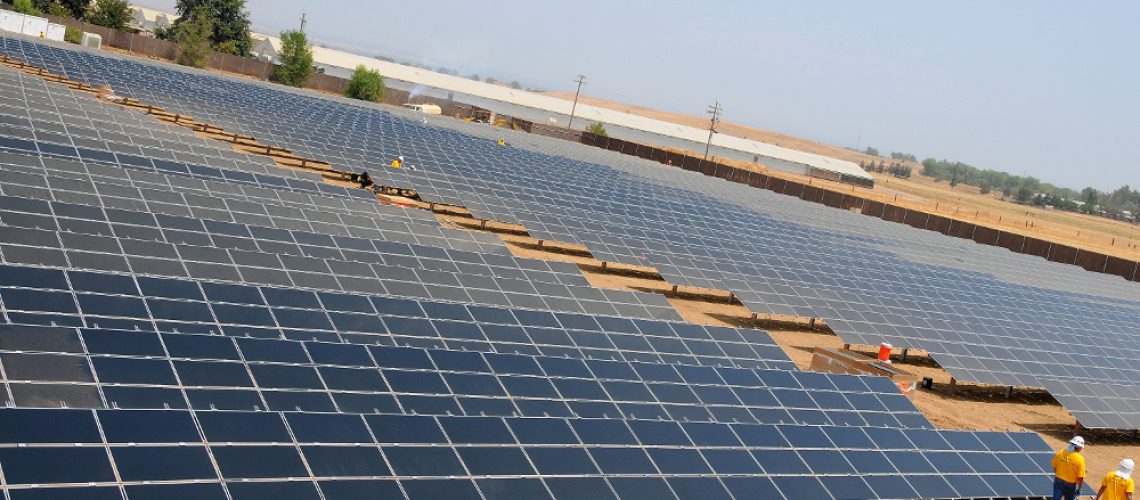The Interstate Renewable Energy Council (IREC) has updated its model rules to facilitate the safe, efficient and reliable interconnection of clean energy resources to the electric grid. Interconnection is one of the biggest obstacles to the expansion of distributed energy resources (DERs) such as rooftop solar installations, community solar and battery storage — and achieving state clean energy, climate and just transition goals.
IREC’s Model Interconnection Procedures, 2023 Edition includes the latest best practices to enable faster and less costly interconnection of DERs, while maintaining safety and reliability. First developed in 2005, IREC’s model procedures are a proven tool for helping states and regions achieve their clean energy goals.
“All too often, outdated state interconnection rules are slowing down the deployment of DERs like solar and battery storage that are critical to the fight against climate change,” said Larry Sherwood, IREC president and CEO. “IREC’s updated Model Interconnection Procedures provide a roadmap for utility regulators to streamline the process and encourage the rapid deployment of clean energy, including in underserved communities that face greater obstacles to its use.”
As demand for clean energy accelerates, utilities face a glut of requests to connect DER projects to an already saturated electric grid. Without up-to-date rules tailored to current clean energy technologies and the latest best practices for integrating them on the grid, it can take months or years to bring new projects online. Customers may also face burdensome costs to upgrade the grid for it to accommodate their project; without mechanisms to distribute those costs fairly, whole sections of the grid can remain closed to new development. These obstacles particularly affect low-income and disadvantaged communities, who already face disproportionately high barriers to clean energy access.
“The IREC Model Interconnection Procedures, 2023 Edition will help regulators and utilities adopt more efficient and equitable processes for connecting clean energy to the grid,” said Radina Valova, IREC regulatory vice president. “They are informed by IREC’s engagement in dozens of state interconnection proceedings and engagement with utilities, the clean energy industry, and energy equity and consumer advocates.”
One example of an area in which updates to state interconnection rules are particularly urgent and which IREC’s Model Interconnection Procedures can help support, is the alignment of interconnection rules with technical standards. Technical standards, such as the Institute of Electrical and Electronics Engineers’ IEEE Standard 1547-2018, govern the capabilities of renewable energy technologies that are incorporated on the grid.
“IEEE 1547-2018 created a new paradigm for utilities and states to navigate. Many states have been slow to begin adopting the standard, but IREC has helped create best practices over the course of working on adoption with several leading states,” said Brian Lydic, IREC chief regulatory engineer. “The model procedures give a great reference point to states seeking to adopt the standard, reflecting necessary procedural steps that may not otherwise be apparent when reviewing the technical aspects.”
Among other things, IEEE Standard 1547-2018 establishes the required “grid-support” functionality needed for smart inverters and other DERs. By requiring the use of smart inverters certified to this standard, states can ensure the grid will be better able to accommodate high levels of renewable energy. This latest version of the Model Procedures provides model language states can use to easily align their rules with this standard.
“These new model procedures set the gold standard for DER interconnection,” said Sky Stanfield, a partner at Shute, Mihaly & Weinberger LLP, who represents IREC on interconnection issues. “They reflect IREC’s decades of expertise in working with diverse stakeholders to establish best practices in an area that is critical to our clean energy future.”
Many states across the United States have adopted IREC best practices to improve their interconnection procedures. A recent example is the New Mexico Public Regulation Commission, which issued a 2022 ruling to streamline interconnection for battery storage projects. These reforms will make it easier to bring community solar projects online and lead to a more equitable distribution of grid upgrade fees.
Nevertheless, the majority of states have significant room for improvement. IREC and Vote Solar recently released Freeing the Grid, a resource that grades each state on its interconnection procedures — with all but seven states receiving a C or lower.
The Model Interconnection Procedures, 2023 Edition is free to download at https://irecusa.org/resources/irec-model-interconnection-procedures-2023. IREC is also hosting a free informational webinar at 2 p.m. ET on Sept. 7.
Tags: best practices, interconnection, IREC



